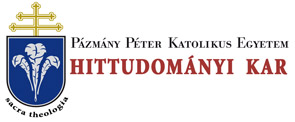Folia Theologica 9. (1998)
György Benyik: Hungarian Bible Translation
220 GY. BENYIK the direction for the later development of the Hungarian language. His grammatical principles, mediated by Gáspár Heltai, influenced later translations and literature. ISTVÁN BENCZÉDI SZÉKELY33 was a Franciscan monk who, after having become aquainted with the teaching of Erasmus in Cracow (1529), became a school-master and worked as a preacher at Szikszó, Abaújszántó, and Olaszliszka. At Gönc he preceeded the famous Bible translator Gáspár Károli. One of the first generation of Hungarian Calvinist humanists, he translated old Latin church hymns (1538) and published Psalm translations with commentary in 1548. These works, always printed in Cracow, helped later to create lyrics for songs which were needed in large numbers for Protestant liturgy. To make them singable, he translated the psalms in verse and, according to his Introduction, he based his version on the Hebrew original, though he had been greatly influenced by the Latin version. Some psalms he took from the Apor-Co- dex and, like Sylvester, wrote them in „1” dialect. He had also intended to translate other Biblical texts, but we do not know whether this plan was carried out or not. He died at Olaszliszka. GÁSPÁR HELTAI34 was of German (Transylvanian Saxon) origin and started to learn Hungarian only in 1536. In 1542 he participated in The Synod of Brassó and in 1543 took its results to Luther. At the same time he enrolled as a student at the University of Wittenberg. What makes this interesting is that at that time he was a Catholic priest but with his powerful sermons he converted the people of his parish to the new religion. He should have left Kolozsvár but he stayed. Together with GYÖRGY HOFFGREFF he founded a printing-house which he developed into a very successful enterprise and later gave to his partner but took it back again. He was a man of great knowledge, capable of hard work, but he had a restless mind, trying out sevaral religions, always seeking the „right” one. After a period of Lutheranism, in 1559 he became the follower of the Helvetian trend and called himself a „sacramen- talist”, but soon he left the Lutherans and took part in the second Catholic-Protestant Polemic at Gyulafehérvár as a member of the Calvinist Church. This was still not the end of his search: at the next po33 Bencédi Székely, István. Zsoltárkönyv. Cracow, 1548. 34 He was born in Nagydisznód (today Helta) in 1490 or 1510 and died at Kolozsvár in 1574.; BORBÉLY, István. Heltai Gáspár. Budapest, 1907.; BORBÉLY, Ferenc. Heltai Gáspár. Budapest, 1910.; ZOVÁNYI, Jenő. Heltai Gáspár és Dávid Ferenc nevének eredete, in Protestáns Szemle 1916.
